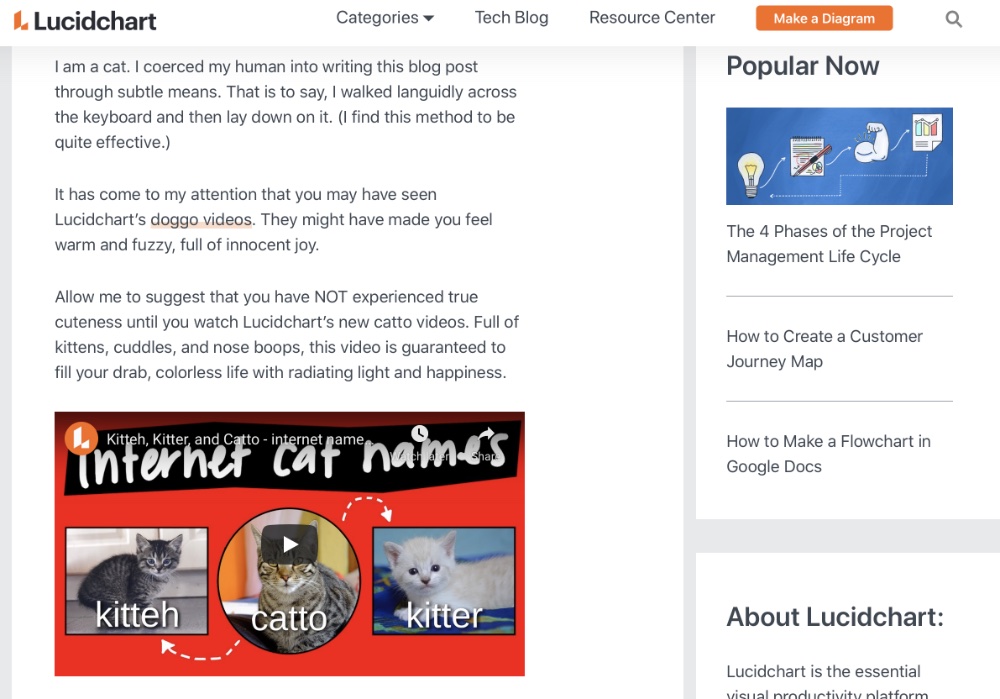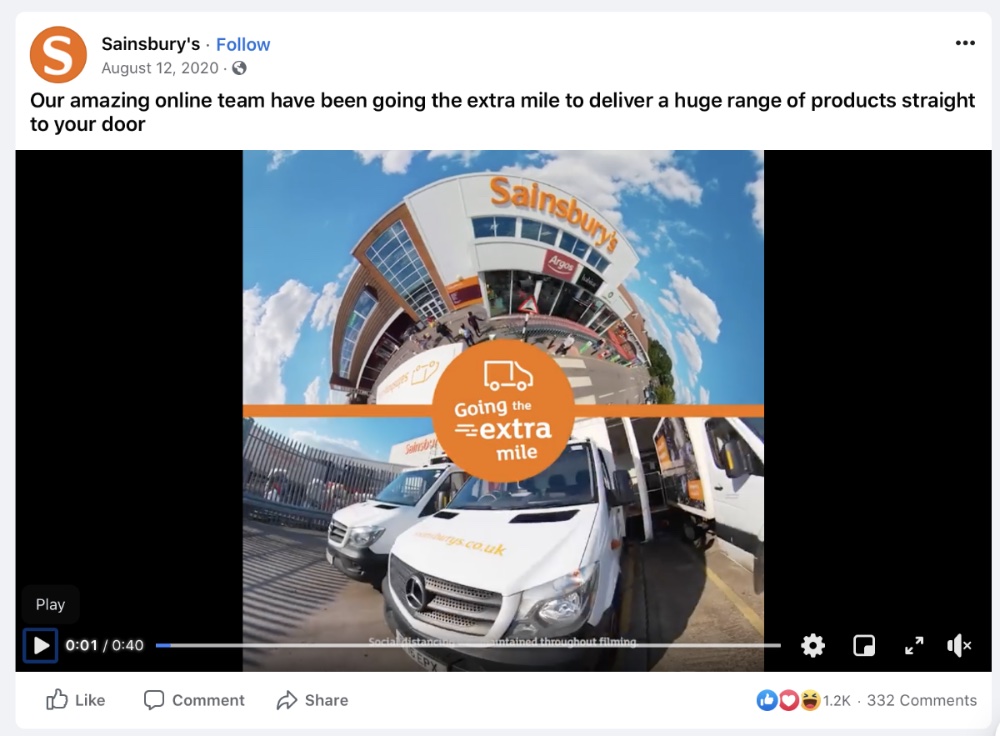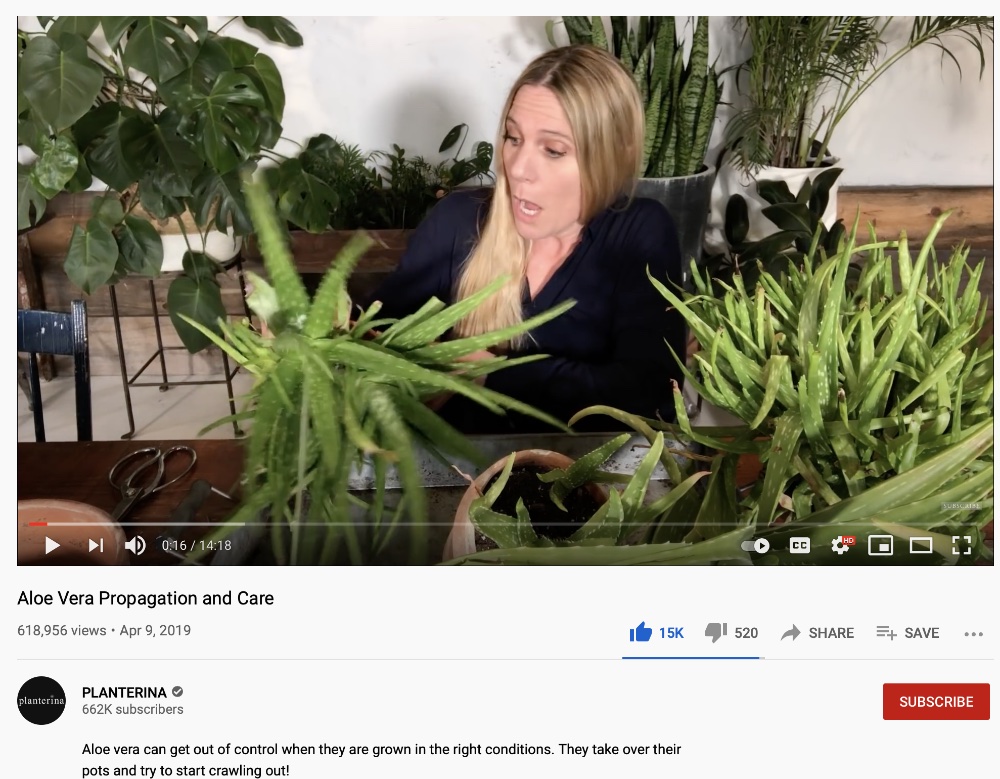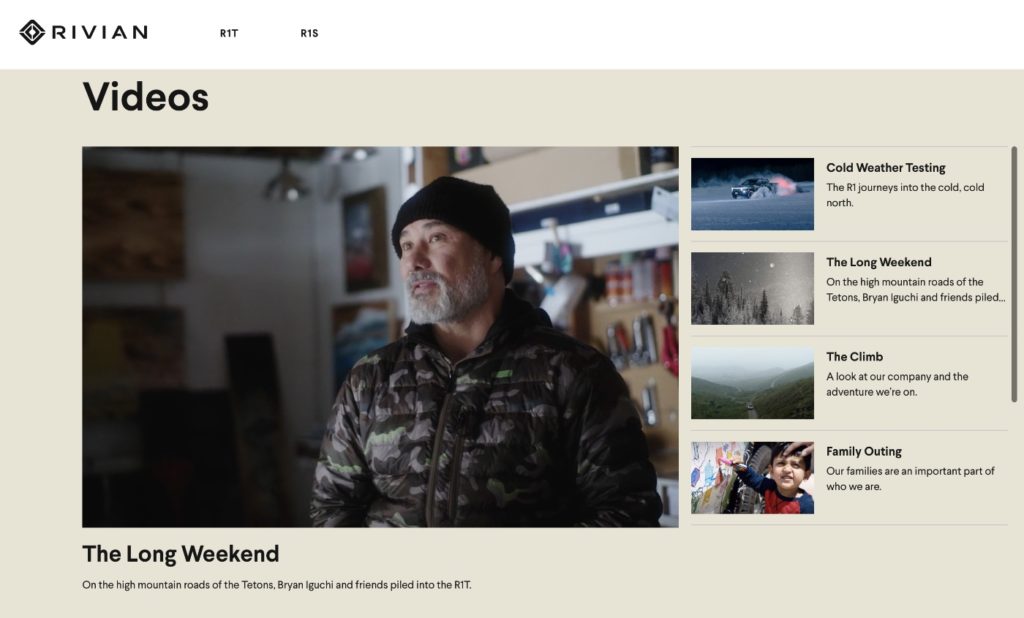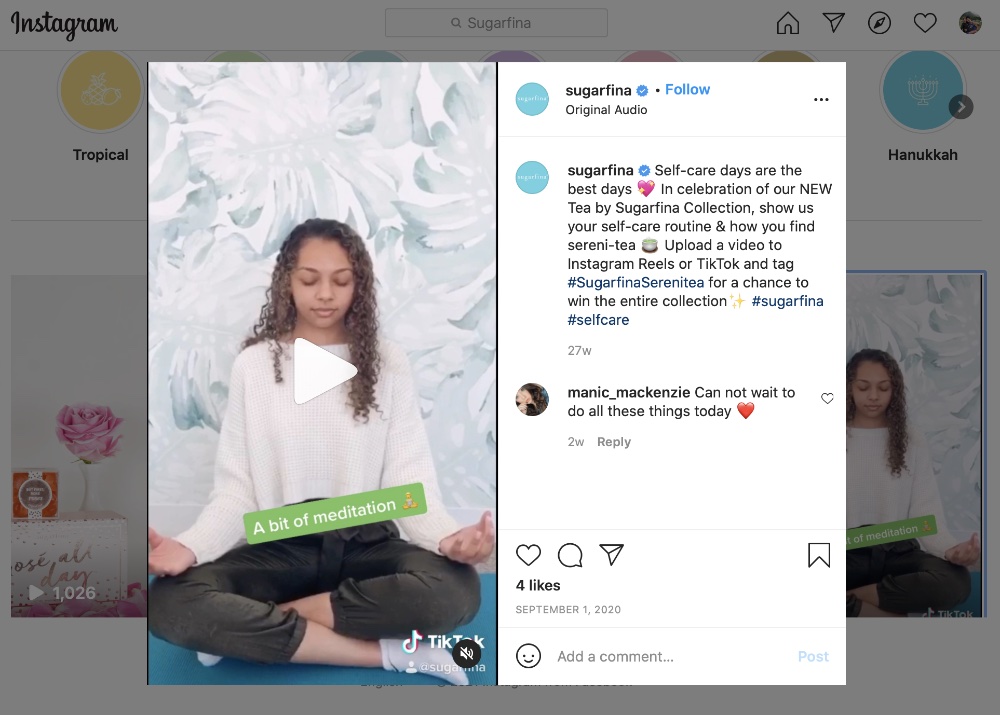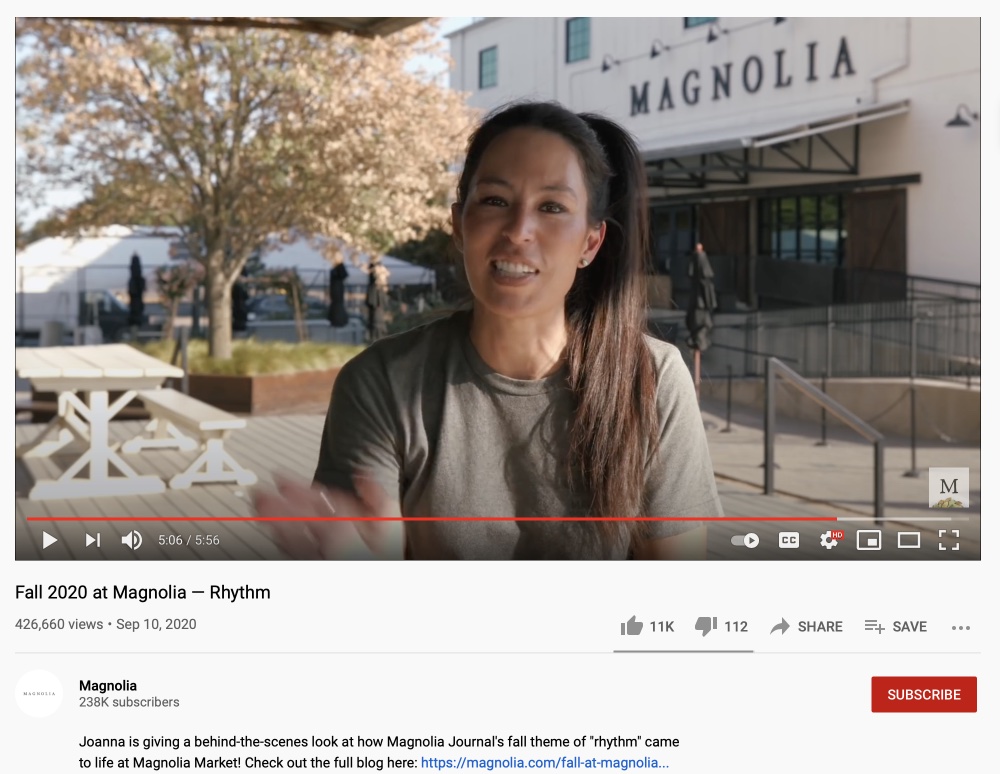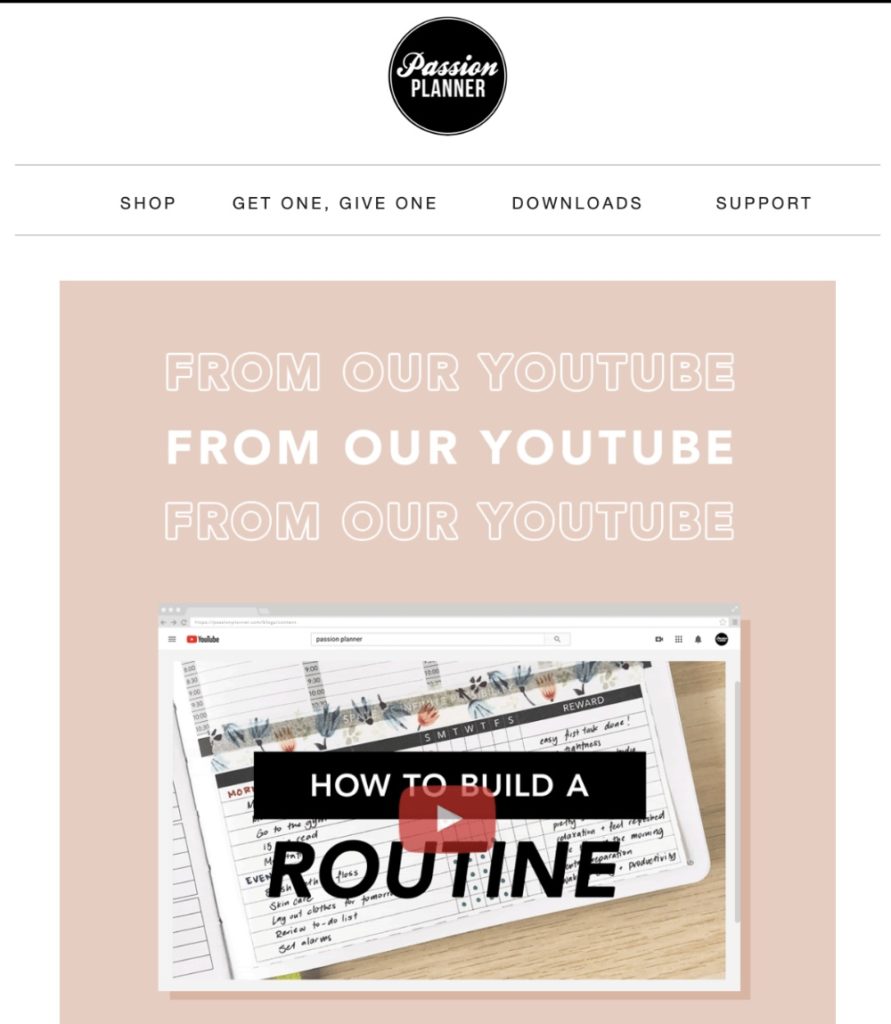Applying 2021 Video Content Stats and Trends to Your Brand’s Marketing
March 17, 2021 | UGCTime and again, studies prove that consumers prefer information that is presented to them via images and video. Specifically, viewers claim they retain 95% of a message when communicated through video.
And considering that recent research shows that online video is consumed at a rate of about 2.5 hours per person every day, it’s clear that video is solidifying a position as one of the most effective forms of content that a company can use to get its message across.
In this report, we’ll look at the top trends in video content and how successful brands are leveraging video to connect with and retain their audiences.
The Video Content Statistics You Need to Know for 2021
Although it’s only March, many video-based marketing campaigns are well underway. From grocery store chains to proprietary software companies, brands are using video marketing to increase leads by as much as 66% annually. Here are some other important stats to keep in mind if you’re on the fence about investing in video marketing:
- 89% of marketers intend to use video marketing on YouTube in 2021
- 83% of video marketers say videos have helped them generate leads
- Conversion rates can increase by as much as 86% when video is used on landing pages
- Watching a product video convinced 79% of viewers to download software or an app
- 93% of marketers report that they attained a new customer because of their social media’s video content
- 88% of marketers are satisfied with the ROI of their video marketing efforts on social media
The numbers don’t lie. Marketing campaigns that include a video component don’t just reach the intended audience — they move the audience to take action, resulting in increased revenue.
7 Video Content Trends That Consumers Want to Watch Now
1. User-generated video
Consumers are savvy enough to know content that is blatant advertising when they see it. Millennials in particular recognize when they’re being sold to and tend to distrust brands with a forceful approach to marketing.
On the other hand, user-generated content will be much better received by consumers. And 60% of people affirm that UGC is the most authentic type of content out there.
By giving ambassadors and influencers the power to create and share videos that feature your product or service on their channels, you’ll expose your brand to new audiences while building trust. To further increase traffic, establish brand loyalty, and collect leads, integrate video created by users into your brand’s narrative.
If you’re stuck on how to drive users to create video in the first place, then consider launching an unboxing video campaign. The next time your customers place an order with your brand, send a thank-you email and ask for a short-form video of them unboxing the product in exchange for a discount code. Just be clear that the video will be used in upcoming marketing initiatives!
2. Vlogs
According to VloggingPro, more than 44% of internet users watch vlogs every month, proving that vlogs have come a long way since the early days of Adam Kontras sharing videos on his blog so friends could follow along on his journey to L.A.
Today, filming your own vlogs with a GoPro, a laptop’s webcam, or a smartphone is a cost-effective, time-saving way to create content that is relatable and highlights your brand’s unique voice. Structure vlogs as a story, with each post functioning as another page in a pre-defined narrative.
Remember that viewers want to actively engage with the vlogger, but they don’t want to hear about what you had for breakfast (unless of course, you have a vlog on gluten-free eating and you’ve just discovered a new gluten-free pancake recipe). Take viewers along on an interesting journey, featuring one of your customers, ambassadors, or even your own staff. This first-person, self-made approach infuses your video content with an authentic human quality that professional-quality productions just can’t offer.
If you have an impressive corporate blog following, don’t abandon those weekly posts. You should, however, consider including video in your blog posts, as Lucidchart did here:
3. 360-degree videos
A study from Magna found that interactive videos increase purchase intent by 7% on smartphones, a number that will only continue to grow as the technology to produce 360-degree video becomes more accessible. According to the study, consumers find interactive video a fun, fresh way for brands to convey versatility.
You don’t need to have a big budget to pull off an innovative 360-degree video either. Use 360-degree video to take your marketing efforts to the next level right now, as this U.K. supermarket chain did!
This video demonstrates how one person can easily use a 360-degree camera to get various perspectives. You can also offer engagement with 360-degree video by creating content your audience can interact with by moving the cursor, tilting their smartphone, or moving around in a headset. To make 360-degree video marketing pay off for your business, make sure your content is entertaining without undermining your brand standards.
4. Tutorial videos
For marketers, it’s natural to lean toward creating video that promotes a service or demonstrates the uses of a product. While there is a place for that content, be aware that the new normal has driven many individuals to YouTube for answers to questions that can’t be posed safely in face-to-face settings. Join the next generation of brands who are stepping up to provide the answers with video content.
Planterina.com, a company that ships houseplants direct from Florida’s foliage industry, has created an entire content library on their YouTube channel that does this so well, it’s easy to forget that behind these funny, helpful videos is a company. Over the course of a 20-minute video, the host only mentions that there are new plants in stock once, and does so naturally and sincerely.
If you plan to create a true tutorial video, keep the content educational and informative. Present actionable insights that solve a problem or provide answers that your audience will value, and save the promotional tie-ins for another platform.
And as for those outtakes, well, don’t delete them! Outtakes can make useful, entertaining video content to keep users engaged while your team is finalizing the professional content for more traditional marketing campaigns.
5. Product demos
As mentioned, the high-quality of a professional video is still relevant in the UGC-dominant marketing strategies of 2021. There are many instances when branded video can show viewers your product in action or promote a service outright.
If you have a video production team shoot your company’s video, keep it genuine by shining the spotlight on customers’ experiences through product demonstrations. Rather than wait for consumers to have a question about a new offering, be proactive and use product demos to answer potential questions about real-life applications, as automaker Rivian did in a video about snowboarder Bryan Iguchi, The Long Weekend.
The most effective product demos show customers who are passionate about your product or service. To find the ideal individuals for product demo videos, reach out to clients who have submitted positive reviews already. Since their enthusiasm will assure potential customers that your brand’s offerings are a good investment, you’ll want to share these videos on your brand’s website, social media accounts, and YouTube channel.
6) Video testimonials
To attract viewers and improve your brand’s credibility, create video testimonials that bring reviews to life. By showcasing the benefits and unique value of a service or product, video testimonials can equip a consumer with all the information necessary to make a purchasing decision.
That same base of satisfied consumers that you rely on for product demo videos can also be a source of material for video testimonials. When you ask customers for a video testimonial, it’s important to offer some direction by encouraging them to use the videos to answer three to five questions that you provide. And be clear about what video format is preferred and where to send the video when it’s ready.
While the words of a review on a web page are useful, seeing and hearing them come from an actual human in the form of a testimonial video will go a long way in building trust, reinforcing your brand’s worth with your audience, and improving your bottom line.
7) Live-streamed video
A Brandlive survey found that 74% of companies use live broadcasting to engage with their customers. And this number will continue to rise as many brands realize that instant video can be more cost-efficient than other video marketing strategies.
Consumers appreciate that live video provides a more direct connection to brands than pre-recorded content. Video streaming can also improve audience reach and convey creativity, which explains why real-time videos see twice as much engagement as pre-recorded video posts.
This year, we’ll see more brands collaborating with customers or clients through branded campaign challenges, such as the #SugarfinaSerenitea challenge.
Sugarfina promoted the challenge on their social media channels to encourage followers to create videos showing their self-care routines and upload the content to Instagram Reels or TikTok for a chance to win product.
While live video challenges are a unique way to drive your audience to create UGC that aligns with your brand’s values, providing users with the ability to stream live has raised some concerns about inappropriate content. And exposing audiences to offensive or even harmful video content would defeat the purpose of using live-streamed content to establish your brand as trustworthy.
When you’re planning a video-streaming campaign for 2021, content moderation must be a priority. If you are unsure of how to approach live video moderation, find a content moderation company that can offer guidance for managing live video and UGC risks through a hybrid moderation approach.
Team up with a content moderation partner that has advanced AI capabilities for moderating real-time videos and a comprehensive training and quality-control program for their in-house live moderation team. Additionally, they should provide an automated profanity filter service combined with more complex text analysis tools for flagging threats, abuse, and criminal activity.
The Results of Compelling Video Content
Successful companies are using video as a marketing tool to ensure that their brand’s message reaches its intended audience. In fact, 87% of marketing professionals are using video as a tool to build brand awareness, captivate customers, and influence people to take action.
Whether you use video testimonials or vlogs, your video content should be compelling enough to accomplish the following for your brand:
Build brand awareness
53% of marketing professionals report using video content to boost brand awareness. From the obvious platforms like Facebook and Twitter to newcomers such as Clubhouse, Caffeine, Instagram Reels, and Twitter Spaces, social media is one of the most effective platforms for sharing brand-enhancing video.
If you’re still posting a static photo and a few sentences on your brand’s social media accounts, it’s time to expand your content horizons. On Twitter alone, Tweets with video produce 10 times more engagement and on Instagram, posts with videos result in more engagement than any other content type. Additionally, 60% of consumers who made a purchase from a brand discovered the product or service on social media.
Captivate customers
The goal of any marketing campaign worth the effort is to captivate your audience, and few content types achieve this better than video. Considering that the average person will spend 100 minutes each day watching online video and 85% of people hope to see more video content from brands in 2021, it’s safe to say that consumers are ready to give content in the form of video their attention.
To create video that really stands out in a crowd of slick promotional content and filtered images, go the authentic route and film a behind-the-scenes (BTS) video that speaks to your company culture. Video that reveals the faces behind a product or service will help your audience gain a better understanding of what makes your brand different from others.
Use BTS to show your users a side of your organization that they might otherwise be unaware of. Show them what motivates your team and drives your brand’s decisions, like Joanna Gaines does in this video when she explains how Magnolia decided to look at the things that matter most in life for the Fall 2020 season.
Influence consumers to take action
At the end of the day, having users that are aware of your brand and entertained by your content doesn’t pay the bills. To convert users into customers, include video content in everything from your online shop to email marketing campaigns.
When it comes to emails, including a video in the messaging improves click-through rates by 65% and adding the word “video” to the subject line can boost open rates by 19%.
An email from your brand should highlight the benefits of your product or service, update your subscribers on new offerings or promotions, share a customer’s story, or provide information that solves a problem. Keep the video in your email brief, using it to remind the reader of the purpose behind the email itself.
You don’t have to choose between using video on your online shop or in your email marketing either. Utilize both! For example, you can boost click-through rates by using a teaser GIF in an email and linking to the full video content that lives on your online shop’s landing page.
The Takeaway
If you’ve been wondering why your blogs, emails, and social media posts haven’t received the same attention that they used to from consumers, then it’s time to spice up your marketing efforts by leveraging one of the top forms of content out there – Video!
Your brand has a unique message to get across, and 2021 is the year to use video for communicating that in a way that resonates with your target market.
